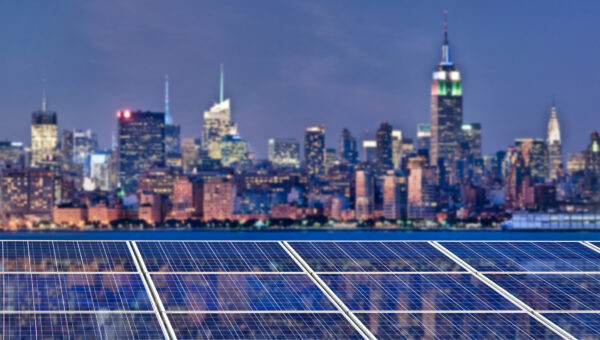
C-PACE and New York City’s Path to a Clean Energy Future
Written by Rich Kassel, Executive Vice President, Capalino
Forget April’s Earth Day—September has become the month for climate news in New York City. In September 2014, Mayor Bill de Blasio announced his administration’s commitment to reducing greenhouse gas emissions by 80 percent by 2050 (80×50). In September 2015, the Mayor first called on the City’s five pension funds to end their investments in coal companies. In September 2016, the City published its Roadmap to 80×50, outlining specific steps towards achieving the City’s 80×50 commitment. (Being part of the technical team on that project was one of my most proud professional moments.) Last year, the Mayor announced plans to require the City’s large buildings to become more energy efficient. And, earlier this month, Mayor de Blasio and Comptroller Scott Stringer joined together to announce that the City will invest $4 billion of its pension funds into renewable energy, clean water, and other climate solutions.
In order to meet each of these long-term commitments, near-term steps are necessary to shift investment and reduce carbon emissions right away. New York City can show great leadership and take an important step forward by passing legislation to incentivize investments in energy efficiency, solar panels on rooftops, and other technologies that will make our largest buildings smarter and that will reduce their carbon footprint.
More specifically, it is time for New York City to adopt a Commercial Property Assessed Clean Energy Program (C-PACE) program for buildings over 25,000 square feet. Mayor de Blasio, City Council Speaker Corey Johnson, and Councilman Costa Constantinides, chair of the Council’s Committee on Environmental Protection, have each signalled their support for bringing C-PACE to the City. The details of how best to do so are still being worked out, so no bill has been introduced yet. With their support for the concept, however, as well as strong support throughout the business and environmental communities, passing C-PACE legislation this year should be a top priority.
Here’s how it works: C-PACE uses property assessments, rather than private debt, to finance building retrofits that improve energy efficiency and resiliency. Using C-PACE, property owners can finance their building improvements with terms equal to the estimated useful life of the improvements, generally up to 20 years. For many building owners, this is a more cost-effective route than more expensive private debt or other sources of capital that do not align well with the timing of the long-term cost savings that flow from retrofitting their buildings.
Another reason why C-PACE is a no-brainer is that it is a purely voluntary financing mechanism – it is a financing option for building owners, rather than a requirement. But if the numbers pencil out (and they should), I believe that there are many owners and developers who will want to take advantage of C-PACE as soon as possible to increase the energy efficiency of their buildings.
Increasing the energy efficiency of the City’s large buildings is an essential component of New York City’s fight against climate change. While this sector has reduced its greenhouse gas emissions by 14 percent since 2010, the City will not meet its 80×50 goal without effective financing mechanisms to reduce energy from our existing inventory of large buildings.
C-PACE is a proven strategy that is already being used in many cities across 35 states and the District of Columbia. Around the country, C-PACE has been used to pay for new heating and cooling systems, lighting improvements, solar panels, water pumps, and other investments in efficiency and resiliency.
Last month, more than 40 real estate, housing, environmental, and labor leaders joined together to support the recommendations of the Blueprint for Efficiency, which was developed over many months by the 80×50 Buildings Partnership convened by the Urban Green Council. Implementing C-PACE to accelerate building retrofits was one of the report’s major recommendations.
As our City’s leaders consider ways to implement near-term steps on the road to meeting our long-term climate, sustainability, and resiliency goals, adopting C-PACE legislation this year should be at the top of the list.
Capalino’s Energy, Environment + Sustainability team works with companies and non-profit organizations to develop and implement low-emission, sustainable business strategies, and to facilitate the adoption of innovative building, energy, resiliency, solid waste, transportation, and water technologies, products, and projects. To learn more, contact Executive Vice President Rich Kassel at rkassel@nullcapalino.com or 212.616.5822, or visit www.capalino.com.
Energy, Environment + Sustainability Services
Get The Latest From Capalino! Sign up for our free weekly newsletter for a roundup of top news and appointments from New York City and State government straight to your inbox every Friday. Click here to subscribe to Affairs+Appointments.



